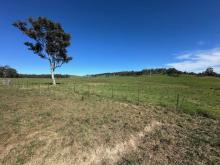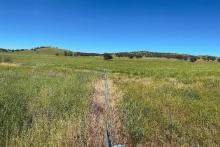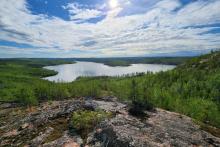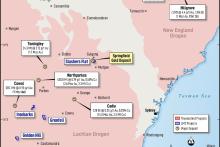Thunderbird Resources is poised to launch a maiden on-ground exploration program at its recently acquired Rockvale-Kookaburra antimony-gold project immediately north of Larvotto Resources’ storied Hillgrove project in NSW. The preparation included detailed desktop analysis with encouraging results covering more than 100 years of exploration and mining history at the site, with boots now expected to be on the ground in January.

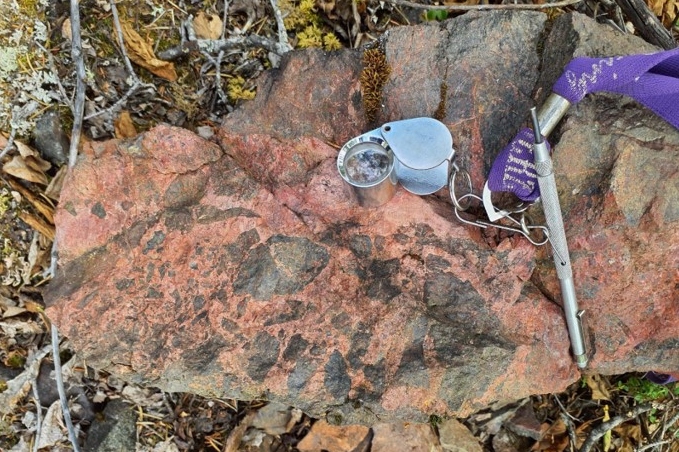
Thunderbird Resources is poised to launch a maiden on-ground exploration program at its recently acquired Rockvale-Kookaburra antimony-gold project immediately north of Larvotto Resources’ storied Hillgrove project in NSW. The preparation included detailed desktop analysis with encouraging results covering more than 100 years of exploration and mining history at the site, with boots now expected to be on the ground in January.
The company, executing an exploration strategy covering two continents, has also received the results of extensive surveys undertaken on its Surprise Creek uranium-copper project in Canada’s world-class Athabasca Basin. It is expected the series of electromagnetic surveys will produce an exploration model for the uranium and copper targets.
In Australia, Thunderbird’s northern NSW-based Rockvale and Kookaburra exploration licences are centred about 50km apart, with much of the data from both areas being digitised for the first time.
The southernmost 358-square kilometre Rockvale project consists of a single licence separated into five parts that sprawls over a maximum north-west/south-east distance of about 42km.
The easternmost four of the Rockvale licence segments almost completely surround the north, west and eastern flanks of Larvotto’s Hillgrove gold-antimony mine and associated infrastructure, centred about 23km southeast of the regional centre of Armidale.
The Hillgrove mine hosts Australia’s biggest known antimony deposit with a mineral resource of 7.3 million tonnes, endowed with average grades of 4.4g/t gold and 1.3 per cent antimony.
Thunderbird’s Rockvale ground covers much of the northward structural strike extension potential from Hillgrove which, by way of support, has offered up a myriad gold and antimony indicators as well as several high-grade historical workings in all four licence blocks.
The company also has plans to have a field crew on the ground early next year scouting its northern 130-square kilometre Kookaburra exploration licence.
Thunderbird has recently completed a review of available regional geophysical data which it expects will assist in refining an interpretation of the regional geological and structural controls on mineralisation.
Thunderbird Resources executive chairman George Bauk said: “Work has commenced on the preparation of our maiden on-ground exploration program in NSW, which includes a detailed compilation and review of the regional geophysical data. The team plans to be on the ground in January 2025.”
Management says results received from a detailed airborne geophysical survey completed at its Canadian Surprise Creek uranium project have provided early encouragement, including strong uranium radiometric anomalies across the project area.
It is also looking at ways to source capital through joint ventures or to secure a partner to advance a second uranium project, Cluff Lake, which is on the western flank of the Athabasca Basin.
“While we still have a strong conviction on these assets, we wish to prioritise our funds, resources and personnel on our main focus, which is the Rockvale and Kookabookra Antimony-Gold Projects in Australia,” Bauk said.
Thunderbird ran extensive high-resolution airborne magnetic, radiometric and very low frequency electromagnetic surveys across Surprise Creek.
A total of 4715 line-kilometres were completed at a 50m line spacing across the entire 206 square kilometre Surprise Creek area and geophysical consultancy Terra Resources has been engaged to interpret the results.
Initial reviews, particularly of the radiometric data, have identified multiple new uranium targets that require on-ground follow-up.
Targets include a strong uranium radiometric anomaly at the previously-defined Surprise Creek Fault drill target, where historical drilling returned up to 2.1m grading 4.37 per cent uranium oxide from 57m.
Later surface sampling by Thunderbird returned an impressive 7.98 per cent uranium oxide and 0.67 per cent copper. The company says surface uranium mineralisation extends over a strike length of about 500m.
According to Thunderbird many of the uranium radiometric targets correlate strongly with an important Archean-Palaeo-proterozoic unconformity, particularly where cross-cutting structures intersect the unconformity.
Ancient unconformities such as this are commonly associated with Canada’s uranium-copper mineralisation. Notably, many of the historical copper prospects, such as Bob Lake, Ellis Bay and Waterloo South, have also been associated with the same unconformity.
Historical drilling at Bob Lake produced 9.1m going 2.07 per cent copper and 27.3g/t silver from surface, while a hole at Ellis Bay came up with 6.6m assaying 1.31 per cent copper from 11m.
Thunderbird’s own rock-chip sampling of historical copper localities in 2022 and 2023 returned copper results including up to 61.7 per cent, 27.6 per cent and 9 per cent copper.
Surprise Creek lies 25km northwest of the historic Beaverlodge uranium district which is immediately north of the famed Canadian Athabasca Basin.
The Athabasca Basin is a region in the Canadian Shield in the provinces of northern Saskatchewan and Alberta and is best known as the world's leading source of high-grade uranium. It currently provides about 20 per cent of the world's supplies.
Beaverlodge hosts the historic uranium mines of Gunnar and the Eldorado – the so-called Ace-Fay-Verna operation.
The Gunnar Mine was an active uranium mine about 25km south-west of Uranium City and about 600km north of Saskatoon. Over its lifetime, the mine produced about 5 million tonnes of uranium ore.
Uranium was also discovered in 1944 by Eldorado Mining and Refining, about 7km east of Uranium City, which led to the mining of three main ore bodies from three shafts - the Verna, Ace and Fay developments.
The Ace deposit was the first to be developed in 1949, the Fay deposit was opened up in 1953 and Verna in 1954.
The operation was closed in June 1982 and decommissioning started in 1985. It was the first mine to present a formal decommissioning plan under an Atomic Energy Control Board licence.
At Thunderbird’s other Canadian uranium project at Cluff Lake, 7km east of the well-known Cluff Lake uranium deposits on the western flank of the Athabasca Basin, the company’s recently completed mobile magneto-telluric (MobileMT) survey outlined basement conductors that could represent pathways for uranium mineralisation.
In the southern Douglas River prospect, two shallow, high-priority drill targets have been defined only 100-300m below surface which are situated only 5km and 14km respectively northeast of the Shea Creek uranium deposits.
The southernmost of the two targets indicated by the survey also coincides with a previously defined gravity/electro-magnetic target.
The second high-priority target area identified by the survey sits in the northeast of the Douglas River ground. Both targets lie on or within an interpreted north/north-east structural corridor trending from the Shea Creek uranium deposits, about 6km to the southwest.
In the northern Moose Lake prospect, three high-priority drill target areas have been defined by a MobileMT survey, with one coinciding with a previously defined gravity/EM target.
The three targets lie within a separate north/northeast trending structural corridor extending about 17km from the Cluff Lake uranium deposits.
The company says a detailed interpretation of its new magnetic, radiometric and very low frequency EM data will help to construct a lithostructural exploration model for the Surprise Creek Fault. Follow up exploration of the targets is proposed for the first half of 2025.
The company has applied to the Saskatchewan government to undertake drilling at Surprise Creek, while Cluff Lake has produced five high priority targets in two significant structural settings that are also screaming to be drilled.
With an upcoming maiden field exploration program in its Aussie ground at the Rockford and Kookaburra projects in NSW and planned drilling at Surprise Creek with five more targets at its Cluff Lake uranium projects in Canada, Thunderbird has a lot on its plate for the new year.
Is your ASX-listed company doing something interesting? Contact: matt.birney@businessnews.com.au







